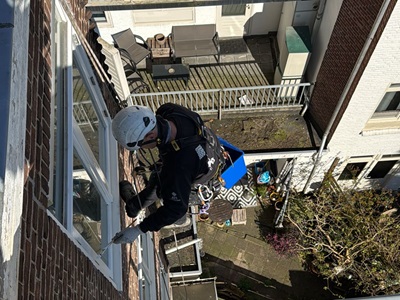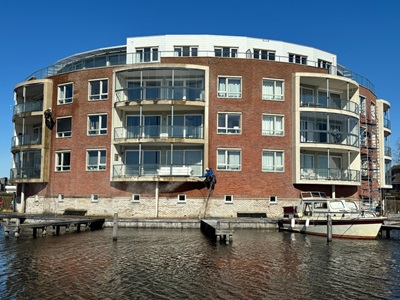Welcome to ATI Rope Access
ATI Rope Access was founded in 2004, and is a Dutch company also known as Abseil Technieken Industrieel (ATI). ATI Rope Access is a pioneer in industrial techniques in the process industry and construction business. Our company is professional, versatile, flexible, and quality conscious, especially concerning responsibility and safety. Our employees, equipment, and facilities meet the strictest regulations. The way we utilize industrial rappelling is much safer than working from scaffolding or a crane.
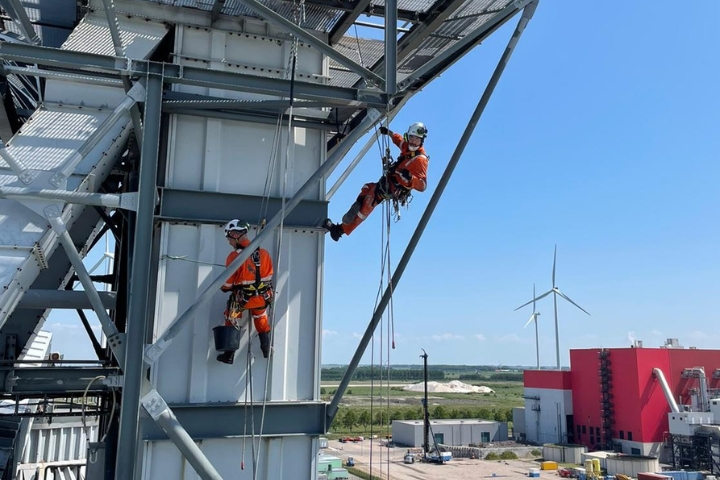
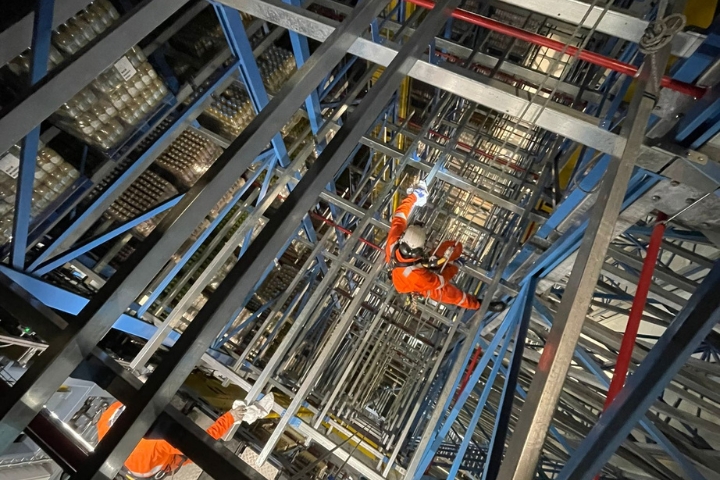
What is rope access?
Rope Access, or rope access, is a technique that uses ropes and positioning techniques to safely and efficiently access hard-to-reach or high work sites. It is becoming increasingly popular for work at great heights, in confined or restricted spaces, or over water.
Rope access benefits
- Safer than traditional high work methodscan
- be deployed quickly & efficiently
- less impact on surroundings
- No permits required (in many cases)
- tailor-made solution for every challenge
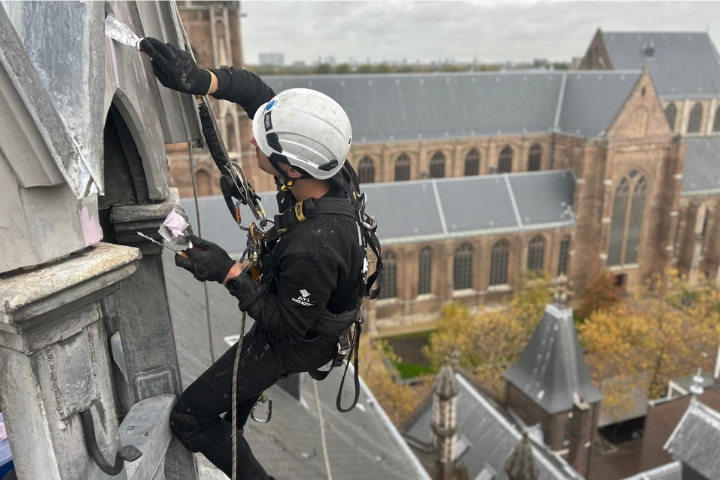
Safety
Here are some important safety conditions for our rope access work. An HSE plan, safety plan with Task Risk Analysis is drawn up for each job, to which all employees involved must adhere. During abseiling, one must always be anchored at two points. These anchors must be tested at 1,500 kg. Should the main line break, there is always a second line as back-up.
VCA** Certified
A.T.I. Abseiltechnieken is VCA ** certified. SCC stands for Safety, Health and Environmental Checklist Contractors. VCA certified companies work with a VGM management system that complies with the ARBO rules in the field of safety, health and environment. For more information, visit the IRATA website & VCA website.

IRATA certifed
As member of the International Rope Access Trade Association (IRATA). A.T.I. Rope access is fully committed to work by the IRATA safety system. IRATA website.

ATI rope access offers the following services
Efficiency and Speed
Quick Setup and Mobilization: Rope access systems can be set up much faster than scaffolding or other traditional methods. There’s no need for extensive planning, transport, or assembly, so the work can start sooner.
Access to Hard-to-Reach Areas: Rope access provides direct access to areas that are difficult to reach by other means, such as rooftops, towers, or industrial plants.
Minimal Downtime: Since rope access systems are lightweight and portable, they can be quickly mobilized between locations, minimizing downtime.
Minimal Disruption
Less Impact on Surroundings: Rope access doesn’t require large, bulky equipment, so there’s minimal disruption to the surrounding environment or operations. For example, there’s no need to block off roads or walkways when performing tasks.
Preservation of Aesthetics: Since there’s no need to erect scaffolding, the appearance of buildings and structures remains unaltered, which is particularly important for historical or architecturally sensitive sites.
Environmentally Friendly
Reduced Carbon Footprint: Rope access typically requires less equipment transport, reducing the environmental impact. Traditional methods such as cranes, lifts, or scaffolding may consume more fuel and produce more emissions.
Lower Waste Generation: There is less material waste since fewer materials (e.g., scaffolding, platform systems) are needed.
Minimal Surface Disturbance
Non-invasive Approach: Unlike scaffolding or lifts, rope access doesn’t cause significant damage or disturbance to the surface being worked on, preserving the structural integrity and appearance of the building or structure.
Improved Access for Emergency Repairs
Rapid Response: Rope access can provide a quicker response for emergency repairs or inspections, especially in hard-to-reach locations. This is particularly useful in industries like oil and gas, where time-sensitive maintenance is critical.
Rope Access Safety
Reduced Fall Risk: Rope access technicians use multiple safety lines and harnesses, significantly reducing the risk of falls. The industry standards for rope access are rigorously high, making it a very safe approach.
No Need for Ladders or Scaffolding: Without the need for ladders or scaffolding, the risk of accidents associated with these tools is reduced.
Compliance with Regulations: Rope access teams are trained to the highest safety standards (e.g., IRATA, SPRAT), ensuring that work complies with strict safety regulations.
Rope Access Flexibility
Access to Confined or Small Spaces: Rope access allows workers to reach areas where scaffolding or lifts cannot fit, such as narrow spaces, ventilation shafts, or the sides of buildings.
Adaptability to Different Environments: It can be used in various environments, such as construction sites, industrial facilities, offshore oil rigs, and tall buildings.
Versatility of Rope Access
Multidisciplinary Use: Rope access is versatile and can be used for various tasks, including inspection, maintenance, cleaning, welding, and even electrical work in locations like tall buildings, bridges, and offshore platforms.
Work at Heights: It’s ideal for working at heights, providing access to areas like rooftops, tall masts, chimneys, and bridges.
Access to Remote or Difficult Locations
Offshore and High-Rise Applications: Rope access is commonly used in offshore oil rigs, wind turbines, and other hard-to-reach structures that may not be accessible using traditional scaffolding or lifts.
Urban Environments: In dense urban areas, traditional access methods like scaffolding may be impractical or obstructive, while rope access allows workers to work around obstacles.
Reduced Risk of Property Damage
Less Risk to Surrounding Infrastructure: Since rope access doesn’t require heavy machinery, there’s less risk of damaging surrounding property or infrastructure, making it safer in crowded or busy environments.
Recently completed projects
We have carried out many different Rope Access assignments for various clients throughout the Netherlands. See some of our recently completed projects below.











